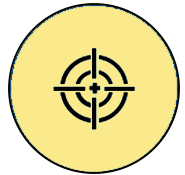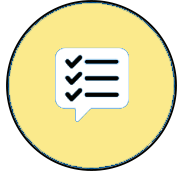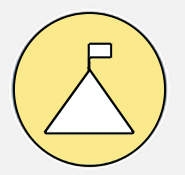
Types of Computers
Class 2
 Objective
Objective
Students will be able to…
- identify and describe different types of computers e.g. desktop, laptop, tablet, etc.
- understand the basic functions and uses of each type of computer.
- compare and contrast the various types of computers.
 Prerequisites
Prerequisites
- Students should understand what a computer is and its general purpose.
- They should be familiar with basic computer components e.g. monitor, keyboard, mouse.
 Goal
Goal
All
All children will be able to identify the different types of computers.
Some
Some children will be able to explain the uses of different types of computers.
Few
Few children will be able to explain in detail the different types of computers.
Operational Definition
All – This gives the goal, which is the minimum that the teacher must achieve for all students in the classroom.
Some – This gives the goal that the teacher may try to achieve for some students in the classroom who can achieve the suggested goal over and above the goal stated for ‘All’.
Few – This gives the goal that the teacher may try to achieve for few students in the classroom who can achieve the suggested goal over and above the goal stated for ‘Some’ and ‘All’.
Materials Required:
Technology
- An audio-enabled computer with an internet connection, smartboard projector and screen.
- All devices like laptops, tablets and desktop computers with accessibility features enabled.
- Screen readers like JAWS and NVDA.
- Large keyboards, built-in screen magnifiers, hearing aids, text-to-speech and speech-to-text software.
- Voice recognition software like Siri, Windows Speech Recognition, etc.
- Headsets.
- Student writing or typing tools.
Teacher Materials
- Whiteboard and markers or blackboard and chalk.
- Pre-teach vocabulary cards, sight words, communication cards and worksheets.
- Lesson videos.
Student Handouts
- Handout 1: Communication Cards
- Handout 2: Vocabulary Cards
- Handout 3: Yes or No Cards
- Handout 4: Thumbs Up and Down Card
- Handout 5: Worksheets
Print Preparation
- Communication Cards for students
- Vocabulary Cards for students
- Thumbs up and Thumbs down Card for students
- Yes or No Cards for students
- Pre-teach vocabulary cards, sight word cards
- Worksheets for students
Preparation for the Activity:
- All the learning and teaching materials needed for this lesson plan must be ready before the lesson begins.
- Ensure that there are enough copies for all children. Multiple copies can be made by photocopying too.
- Please have the assistive technologies and accessibility features ready for your inclusive classroom.
Setup for transacting the lesson:
This topic must be taught in the computer lab.
1. Expected Prior Knowledge
Awareness of the extent of student’s prior knowledge of the topic will help the teacher plan and deliver the lesson appropriately.
This could be assessed through the provided pre-assessment worksheet.
Worksheets, Vocabulary Cards, Sight Words:
Worksheet: Pre-Assessment
Enlarged Worksheet: Pre-Assessment
LTM: Pre-teach Vocabulary
LTM: Sight Words
Worksheet: Word-to-Word Matching
Enlarged Worksheet: Word-to-Word Matching
Wordwall: Word-to-Word Matching
Worksheet: Word-to-Picture Matching
Enlarged Worksheet: Word-to-Picture Matching
Wordwall: Word-to-Picture Matching
Worksheet: Picture-to-Picture Matching
Enlarged Worksheet: Picture-to-Picture Matching
Wordwall: Picture-to-Picture Matching
2. Warm-Up
1. Write the topic ‘Types of Computers’ on the board.
What are the different types of computers you know?
Possible Answers: Laptop, desktop, tablet, smartphone
2. Why do we use a smartphone?
Possible Answers: to make phone calls, to take pictures, to play football
3. Ask, “Which computer can be kept on the lap?” (The answer is a laptop)
4. Ask, “Which computer sounds like a medicine?” (The answer is a tablet)
Differentiation
- Students can write down answers in their notebooks or on a slip of paper and stick it on the corkboard.
- Students can choose to write their answers or communicate their responses verbally with a friend/teacher.
- Students can draw the word or point to the picture on the Communication Card (a Communication Card handout should be provided).
- The teacher should immediately praise the student with her/his name and reward the child.
Worksheets and Communication Cards:
Worksheet: Vocabulary
Enlarged Worksheet: Vocabulary
LTM: Thumbs Up and Down
LTM: Communication Card
LTM: Yes or No Cards
Instructions to the teacher:
- Begin the topic with the Pre-assessment worksheet and pre-teach the vocabulary.
- Relate to real-life experiences: Discuss how different types of computers are used in various professions and daily life.
3. Sit Smart
When I use my computer
I sit straight on the chair,
Rest my hands on the keyboard,
Keep my wrists on the table,
Eyes on the screen
and feet flat on the floor.
Video: Sit Smart
Video: Sit Smart with ISL
4. Types of Computers
Bring the attention of the students to the screen and say, “Let’s watch this video.”
Ask students to give a thumbs up whenever they hear and see the words desktop computer, laptop computer, smartphone, PDA, tablet computer, or notebook computer in the video.
The teacher has to introduce the word portable to the students. Portable means ‘things that can be easily moved or carried’.
Play the video
Video: Types of Computers
Video: Types of Computers with ISL
Informal assessment (After playing the video)
1. Ask, “What is a laptop computer?”
If needed, prompt the children to come up with a definition using language from the video.
Example: It is a portable computer.
Write the term and definition on the board after the students respond.
2. Ask, “Do we keep desktop computers on our lap?” (The answer is no)
3. Ask, “Can we carry laptops everywhere?” (The answer is yes)
4. Ask, “Does the notebook computer look like a smartphone?” (The answer is no)
5. Ask, “Do we use smartphones to make calls?” (The answer is yes)
6. Ask, “Do we use tablet computers to play games?” (The answer is yes)
Worksheet: Informal Assessment
5. Let’s Prepare Charts
Aim: To bring out students’ creative expression and gauge their knowledge on the topic ‘Types of Computer’
Resources Required: Cutouts of the pictures, 5 chart papers, glue, scissors, coloured pencils, papers, pencils, erasers, ruler.
Setting for the activity: Peer activity/Group activity
Type of Activity: Creation
Preparation for the Activity:
1. Divide the students into five groups.
2. All the printouts to be provided to students must be kept ready before the activity.
3. Chart paper, glue, scissors, coloured pencils, papers, erasers, rulers, etc. must be provided.
Role of the Teacher: Facilitator
Procedure:
1. The teacher shows the instructional video ‘Let’s Prepare Charts’ to all the students.
2. The students can draw/cut and paste the pictures on the chart.
3. Children who are good at writing should be allowed to write on the chart.
4. Display the chart on the class noticeboard.
Observation: Students will work in groups and understand the different types of computers by presenting and having discussions.
Conclusion: This activity will help the students to know the different types of computers and their uses.
Suggested variation in rules:
If needed, allow additional time for children to finish the project.
Instructions to the teacher:
1. For group activity, divide students into small groups and assign each group a type of computer to research and present. They can choose their method of presentation (poster, digital slideshow, or report).
2. Provide materials (handouts, internet access) and guide them in creating a presentation (poster, digital slideshow, or report).
3. Each group should include the following in their presentation:
i) Definition and features of the assigned type of computer
ii) Common uses and examples
iii) Advantages and disadvantages
4. Have each group present their findings to the class.
5. Facilitate a discussion, asking questions and encouraging students to compare and contrast the different types of computers.
6. Which type of computer do you like and why?
Video: Let’s Prepare Charts
Video: Let’s Prepare Charts with ISL
LTM: Printables for the Activity
LTM: Types of Computers Poster
LTM: Types of Computers Enlarged Poster
LTM: Types of Computers Poster Horizontal
Try Me: Types of Computers
6. Adventures of the Tech Town Friends
Desktop Dan was big and good, perfect for important work.
Laptop Lucy was on the go great for travel and entertainment.
The tablet Tina was ideal for drawing and playing games.
Smartphone Sam was small and always ready to connect.
PDA Patty was great at organising important information.
Notebook Nick was light and perfect for learning and writing.
One day, the friends went on a picnic. Soon, it started raining. They worked together to find shelter for everyone, showing that each of them was special in their own way.
Video: Adventures of the Tech Town Friends
Video: Adventures of the Tech Town Friends with ISL
7. Adaptations and Modifications: Types of Computers
Adaptations and Modifications: Types of Computers
8. Assessment: Types of Computers
Worksheet: Types of Computers
Enlarged Worksheet: Types of Computers
Wordwall: Types of Computers
9. Assistive Technologies and Adaptive Devices
Assistive Technologies and Adaptive Devices
Teacher Resource Document
| Source and Attribution of images: All images used in the above Assets and Aids are originally created. |
| This digital material has been developed by the Sri Sathya Sai Vidya Vahini Inclusive Education Project, a unit of Sri Sathya Sai Central Trust, Prasanthi Nilayam, as a collaborative offering in the service of our nation. |